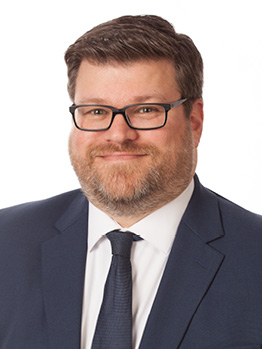

www.bmf.cpa
Designing a 401(k) Matching Program to Meet Your Objectives

We’ve found over the years that it can be challenging to get employees to set aside money for their retirement. By providing a matching contribution to your employees, you are helping to incentivize them to put their own money away by offering them an immediate and significant “return on their investment.” The approach is to do this in a way that’s affordable to both you and your employees. So, let’s address how to get there in a way to best meet your objectives.
Use of a fixed match formula
In past years, the most prevalent form of a matching contribution to employees was what we’ll refer to as a fixed match. In this type of formula, your company would be providing a specific match, whether in dollars or percentage, to your employees’ contributions. While this has been the favored approach to matching contributions, according to the Council of America’s 63rd Annual Survey Report, it is trending downward. It seems that the larger the plan, the more likely they are to follow a fixed-match formula. A fixed match up to a limit can be motivational – or not – to your employees, depending on its structure.
Fixed match versus graded match
Let’s differentiate the fixed match approach from a graded match approach. In a graded match formula, for example, the match might be $1 for $1 up to a specific percent of income threshold (such as 4%), and a $0.50 match on the dollar of the participant’s total contribution level above the minimum threshold, up to a set amount or percentage.
Examples:
- An employee contributes at 4%; the employer matches $1 for every $1.
- An employee contributes at 8%; the employer matches $1 for every $1 up to the first 4%, then $0.50 for every $1 over 4% but less than 6%; no match over 6%
- An employee contributes at 10%; the employer matches $1 for $1 up to the first 4%, then $0.50 for every $1 over 4% up to 8%; no employer match over 8%.
We’ve found the graded approach can be effective in incentivizing all employees to at least get up to the lower level, which in this example is a 100% return on investment for them. And while some employees don’t take it to the next level, there is, of course, still an excellent return on investment for those that match at the higher levels.
Use of a stretch match formula
We all know that the more money an employee puts away for retirement, the better off they will be long-term. The concept of a stretch match program could, for example, be a 50% match on up to 10% of deferrals, instead of a $1 for $1 match on the first 5%. The maximum potential employer outlay per participant is the same under both approaches: 5% of compensation.
The concept behind a stretch match is that employees may be motivated to set aside more of their own compensation than they otherwise would have, such as 10% instead of 5% in this example, if they are motivated to defer as much of their own compensation as will be matched.
For instance, under this theory, John Smith earning $60,000 would wind up with only 10% (5% deferral plus 5% match) ($6,000) of his compensation added to his 401(k) plan balance in a year with the 100% match formula, versus 15% (10% deferral plus 5% match) ($9,000) in a year under the stretch-match arrangement.
Auto-enrollment and auto-escalation
In the Vanguard study, Stretching the match: Unintended effects on plan contributions, it was suggested that stretch matches alone might not be yielding the desired results. The study found that higher match thresholds showed lower plan participation and contribution rates, while higher match dollar values showed higher participation and employee contribution rates.
However, Vanguard’s study focused on non-highly compensated participants (and eligible non-participants) of 401(k) plans that did not auto-enroll participants. Plans that have auto-enrollment features weren’t analyzed because they “have a strong effect on participant behaviors” that skew the results. Study after study shows that larger plans use auto-enrollment in much larger numbers. Additionally, an increasing number of plans not only use auto-enrollment but auto-escalation to help increase employee deferrals into their plans. With auto-escalation, you may set up your plan so that new employees are automatically enrolled, unless they elect out, to put in (for example) 3% of their compensation and then, after the first year, that escalates to 4%, then after then next year to 5%, and so on.
When the analysis was complete and adjustments were made for typical demographic patterns, such as participation and deferral rates rising with employee age, the conclusion was clear: “Seemingly counterintuitively, plan sponsors with voluntary enrollment plans seeking to raise plan contributions should consider designs with 100% match formulas.” The Vanguard report also highlighted the positive impact of auto-enrolment and auto-escalation, based on other studies.
Meeting your objectives
If your objective is to get employees to put away as much money as they can without additional cost to you, stretch matching with auto-enrollment, along with consideration as appropriate to auto-escalation, might be the solution for your 401(k) plan. The stretch match in combination with the automatic features can also help combat failed compliance testing at the end of the year that could otherwise result in refund checks to your highly compensated employees if your plan is not a safe harbor plan. This is worthy of a conversation with your benefit plan advisor.
Our benefits plan team can help you analyze various scenarios for your organization to meet your desired objectives. Contact us for a review of your plan.

